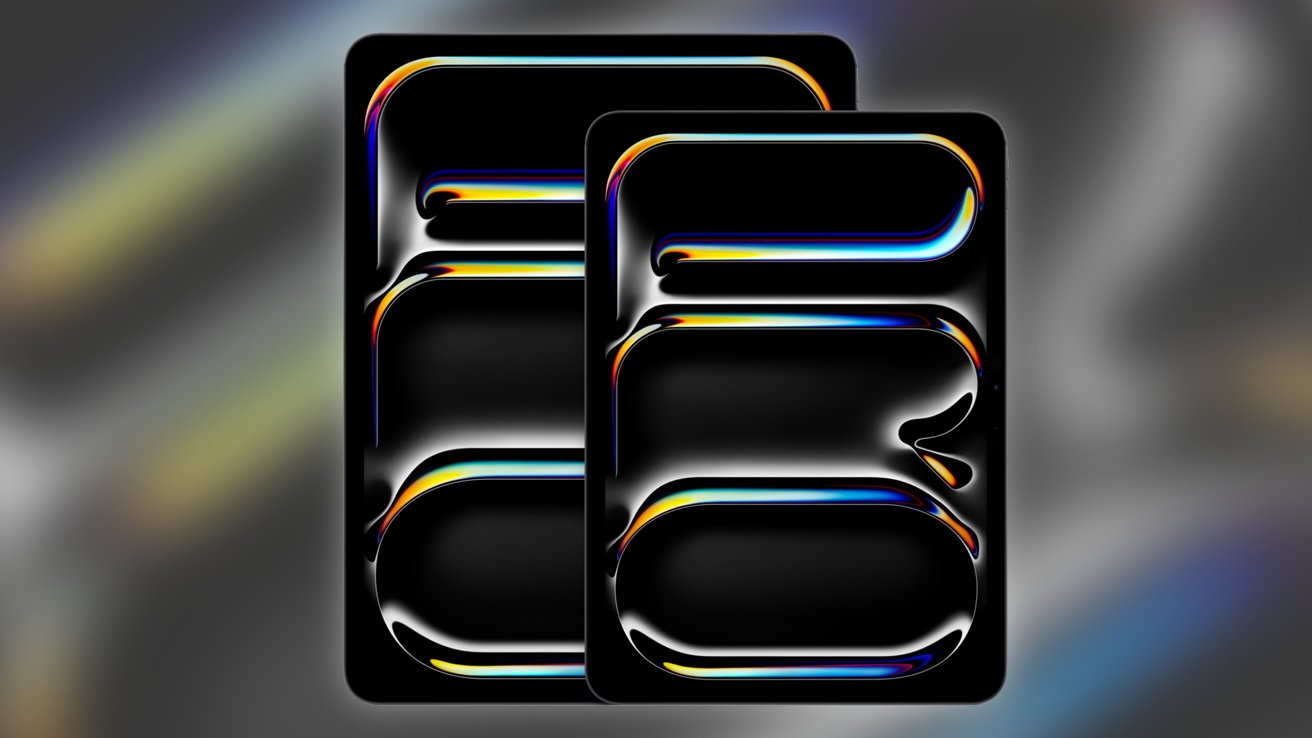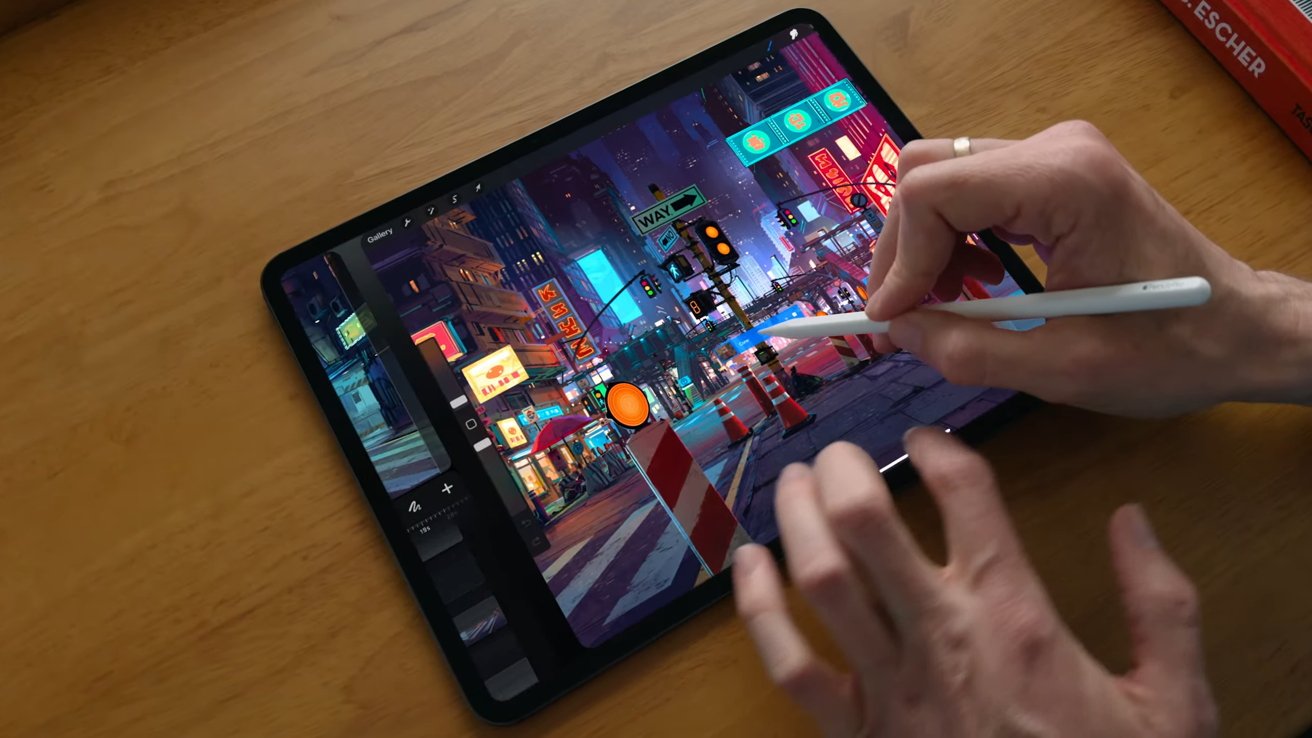The initial reviews of Apple's new iPad Pro have arrived, with the impressive Tandem OLED screen and the upgrade to M4 catching the most attention from reviewers.
Before the release of many major products, Apple offers select numbers of reviewers some pre-release access. With the release to the public imminent, those hands-on opinion pieces are starting to get published.
The update to the iPad Pro is an important one for Apple. It's been well over a year since there have been any real iPad range updates, making any changes to the iPad Pro crucial to the product line.
As part of the changes, Apple finally answered rumors by shifting to an OLED screen. One that actually uses two panels stacked on each other, which Apple refers to as Tandem OLED.
Then there's the M4 chip, which Apple claims is 1.5 times better than M2 in terms of CPU performance. That chip also benefits from a better GPU and a massively more powerful Neural Engine, among other changes.
Lastly, there's the form of the iPad Pro itself. The footprint of the 11-inch and 13-inch models has changed a tiny bit, but they're both thinner and lighter than before.
Spectacular design with overpowered hardware
YouTuber Brian Tong says the biggest change to the iPad Pro is its thinner design. It is overpowered with the M4 processor with iPadOS holding the hardware back.
Nano Texture mutes the deep blacks a bit and soft can appear softer by comparison. It is worth the upgrade for those that need it, like outdoor work.
The story will always center around what iPad can and cannot do, but it depends on what work you're doing. It is Apple's design at its best and can feel like a MacBook with the new Magic Keyboard.
The best kind of overkill
A review from The Verge says the new iPad Pro is a genuine achievement in tablet design and is just fun to use. However, the software problem still persists — calling iPadOS an oversimplified and locked down operating system.
The new OLED display is gorgeous, but it comes at a high price, especially once accessories are added in. Though, moving the selfie camera to the landscape side is a big finally.
The new Magic Keyboard is the star of the show, and the Apple Pencil Pro's features stand out with user-facing additions. But no matter how you slice it, it is still an iPad, and that means this hardware is overkill for most use cases.
So very nice, and so very expensive
Engadget calls the iPad Pro one of Apple's most divisive devices in years. It is an undeniable feat of engineering with a high cost.
Apple managed to push the iPad Pro further without changing the base iPad experience. iPadOS works mostly the same whether you spend $3,000 on the latest iPad Pro or buy one with an M1 processor.
The new iPad Pro may not look very different at first glance, but the updated design feels very different in the hand. It is both thinner and lighter, making it more comfortable to hold — radically changing the experience of holding it.
Magic Keyboard for iPad Pro is the best option compared to competitor's. Apple Pencil Pro is a notable upgrade, though the lack of backward compatibility in both the Pencil and iPad is painful for your wallet.
My Computer
YouTuber Christopher Lawley shares how the new iPad Pro features enhance his workflows. He is a YouTuber that works from iPad, so the upgrades are of particular use to him.
The Nano Texture display allows the iPad to be captured on video without glare issues. It is a noticeable difference when viewed side-by-side with OLED, but negligible and worth the trade off for glare omission.
The separation of features for iPad Pro based on storage tiers makes the 1TB and up tier feel like an even more premium option. It is a weird move by Apple to force binning and RAM to change based on storage, but one they've pulled before.
Of course, no matter what Apple does to the Apple hardware, it doesn't affect iPadOS, at least not by much. The Apple Pencil Pro adds interesting functionality, like the ability to run a Shortcut using a squeeze gesture, but iPadOS is still missing a few features like the ability to record podcasts.
The Magic Keyboard is an excellent upgrade and the larger trackpad makes a big difference. More viewing angles, better materials, and an unchanged typing experience improve the use case overall.
The great Apple laptop trade-off
The Wall Street Journal's Joanna Stern suggests using the iPad Pro is like driving a Ferrari on a golf course. It has so much power and capability hampered by a mobile operating system.
Comparing the iPad Pro to a MacBook leads to some interesting results. The iPad Pro has an amazing OLED display and a powerful M4 processor, but it can't run macOS.
Any Mac you choose also has more than just a single USB-C port. Battery life has also remained a consistent 10 hours despite the MacBook Pro reaching 15 hours.
Stern hopes that the iPad will one day be able to run macOS. She asked Apple's vice president of iPad and Mac product marketing, Tom Boger, about it and he remained firm on his previous claims.
Boger says iPadOS is built for touch, macOS isn't. They are different paradigms, though he did say "oh, I can't say we never change our mind."



